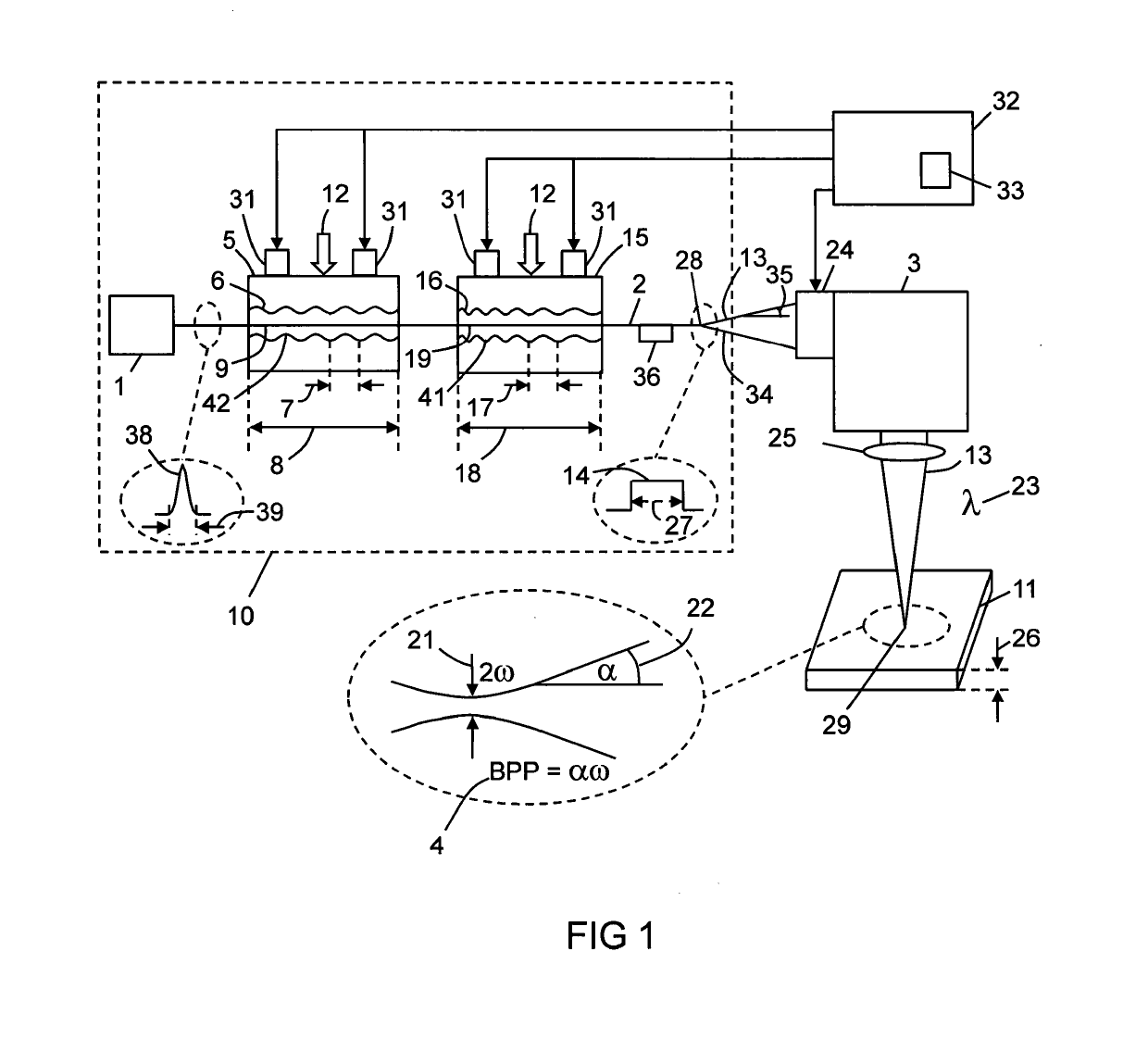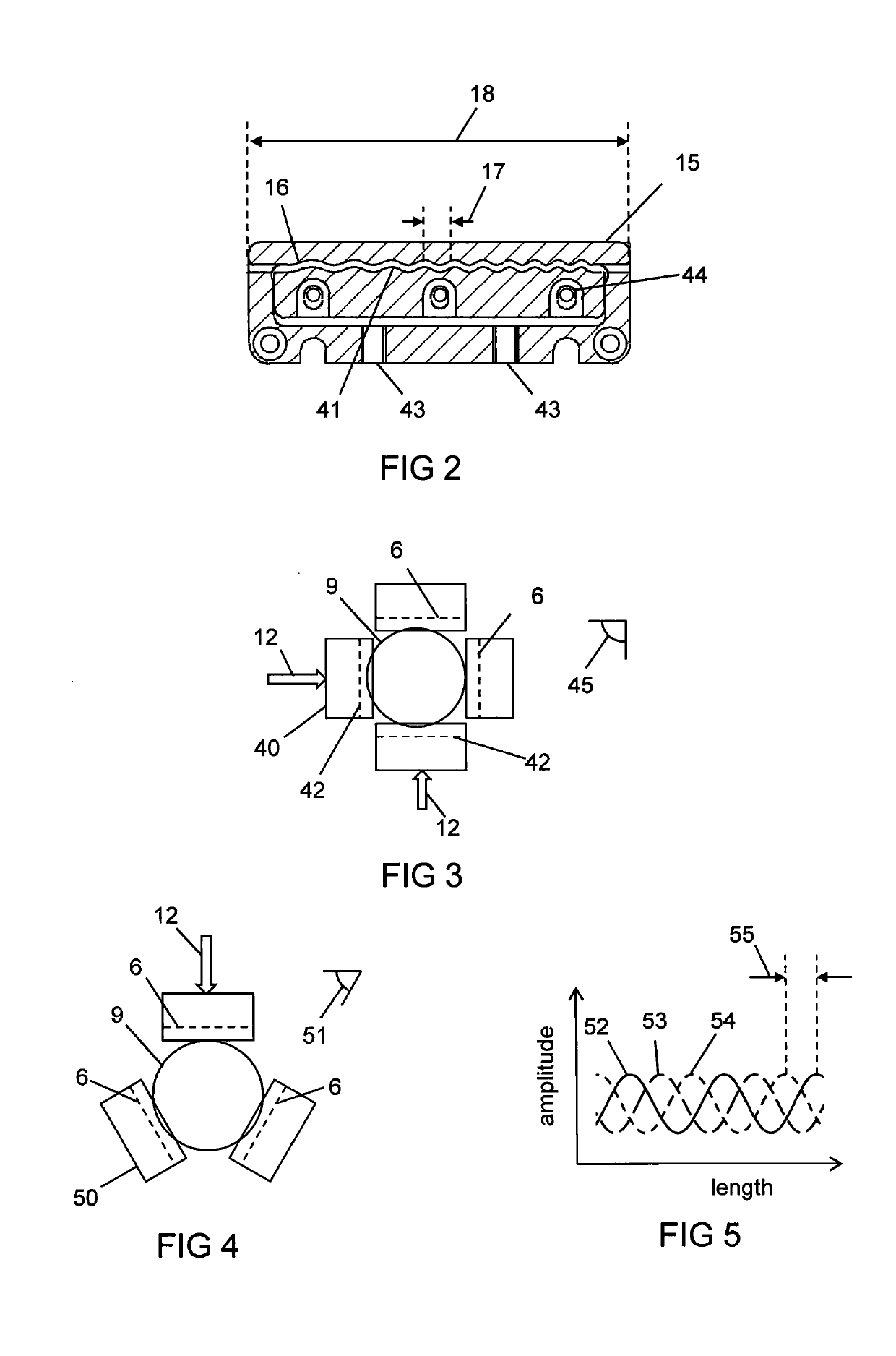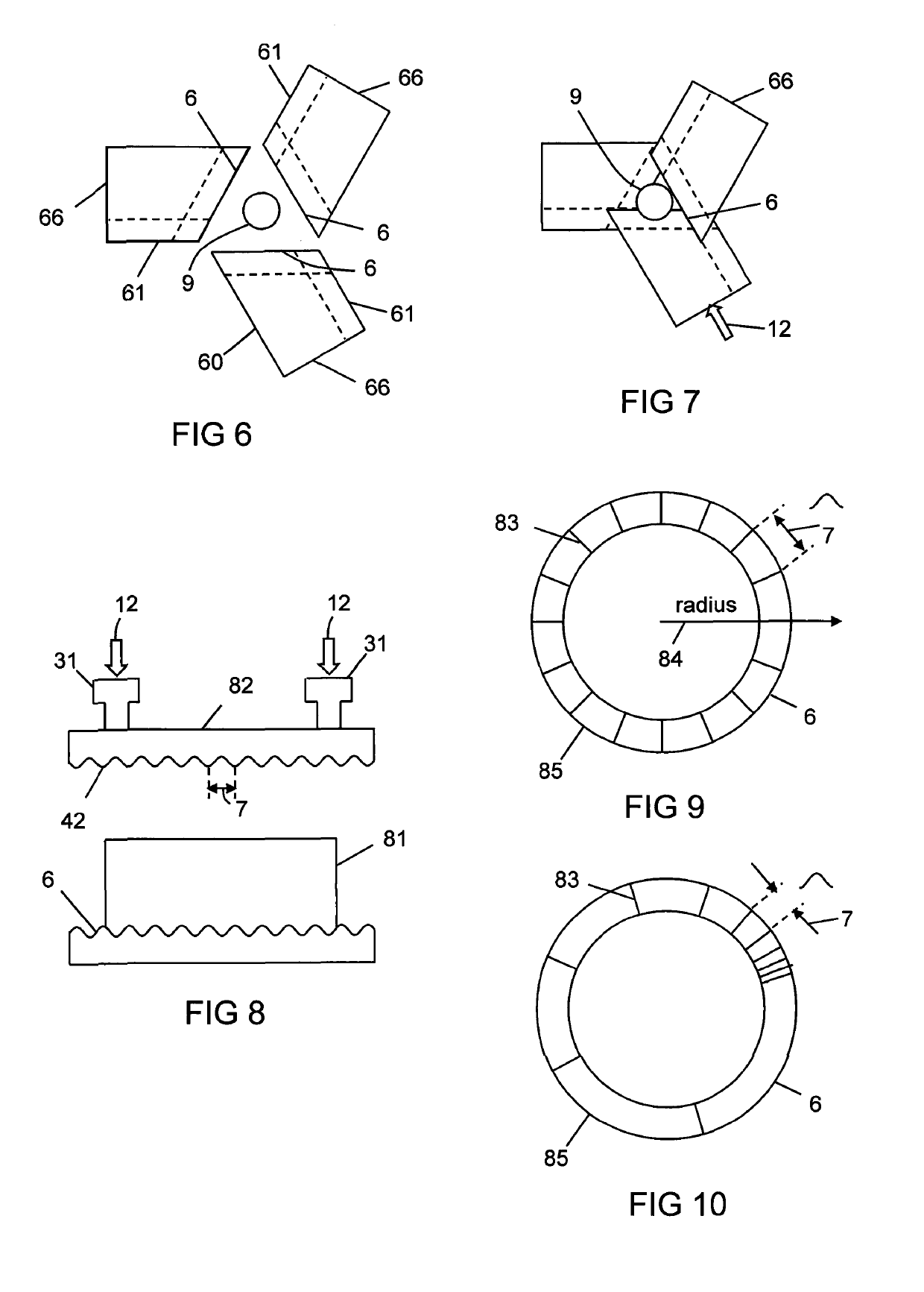Apparatus and Method For Laser Processing A Material
a material processing and apparatus technology, applied in the direction of cladding optical fibre, manufacturing tools, instruments, etc., can solve the problems of limited benefit, inability to optimize process parameters for all metal types and thicknesses, and similar limitations of other material processing equipment, such as welding and marking
- Summary
- Abstract
- Description
- Claims
- Application Information
AI Technical Summary
Benefits of technology
Problems solved by technology
Method used
Image
Examples
example 1
[0123]FIG. 20 shows a first Example of the invention. The squeezing mechanism 5 shown in FIG. 1 was applied to the first optical fibre 90 of FIG. 11. The core 91 supported the fundamental mode 121 of FIG. 12 and the second order mode 122 of FIG. 13. The fundamental mode 121 propagated in the core 91 as indicated above and below the first optical fibre 90 at point A. The core 91 had a diameter 92 of order 15 μm and a refractive index 96 which was greater than the cladding index 99 by 0.0034. The squeezing mechanism 5 had a pitch 7 which matched the difference in the effective indices 97 and 98 of the optical modes 121 and 122 such that the pitch 17=2π / Δβ. By adjusting the squeezing force 12 applied by the squeezing mechanism 5, the laser radiation 13 output by the first optical fibre 90 could be switched between the fundamental mode 121 and the second order mode 122 as indicated above and below the first optical fibre 90 at point B of FIG. 20 respectively. It was also possible to swi...
example 2
[0127]FIG. 21 shows a second Example of the invention in which the first optical fibre 90 of the First Example has been replaced by the optical fibre 140. The squeezing mechanism 5 shown in FIG. 1 was applied to the fibre 140 shown in FIG. 14. The core 91 had a diameter 92 of approximately 15 um and a refractive index 96 which was greater than the cladding refractive index 99 by 0.0034. The core 91 could support the fundamental mode 121 having the effective refractive index 97. The four satellite cores 141 each had a diameter 143 of 6.6 μm, a refractive index 142 greater than the cladding refractive index 99 by 0.003, and an outer edge to outer distance 149 of 36.6 μm. The satellite cores 141 could propagate mode(s) 151 having an effective refractive index 143. The squeezing mechanism 5 had a pitch 7 designed to match the difference in the effective refractive indices 97 and 143 such that the pitch 7=2π / Δβ. As indicated in FIG. 21, by adjusting the squeezing force 12 applied by the ...
example 3
[0129]FIG. 22 shows a third Example of the invention in which the second optical fibre 140 of the first Example has been replaced by the second optical fibre 160 of FIG. 16, and the third optical fibre 180 of the first Example has been replaced by the third optical fibre 190 described with reference to FIG. 19. The design of the first optical fibre 90 was the same as described with reference to the first Example and FIG. 20.
[0130]The first optical fibre 90 was spliced to the second optical fibre 160 shown in FIG. 16. The central core 91 of the second optical fibre 160 was the same design as the core 91 of the first optical fibre 90. The ring core 161 had an outer diameter 169 of 40 μm, a thickness 164 of 5 μm, and a refractive index 162 that was greater than the cladding refractive index 99 by 0.0026. When the squeezing mechanism 5 was adjusted such that the output of the first optical fibre 90 was the fundamental mode 121, the fundamental mode 121 coupled successfully to the core 9...
PUM
| Property | Measurement | Unit |
|---|---|---|
| pressure | aaaaa | aaaaa |
| diameter | aaaaa | aaaaa |
| pressures | aaaaa | aaaaa |
Abstract
Description
Claims
Application Information
 Login to View More
Login to View More - R&D
- Intellectual Property
- Life Sciences
- Materials
- Tech Scout
- Unparalleled Data Quality
- Higher Quality Content
- 60% Fewer Hallucinations
Browse by: Latest US Patents, China's latest patents, Technical Efficacy Thesaurus, Application Domain, Technology Topic, Popular Technical Reports.
© 2025 PatSnap. All rights reserved.Legal|Privacy policy|Modern Slavery Act Transparency Statement|Sitemap|About US| Contact US: help@patsnap.com



